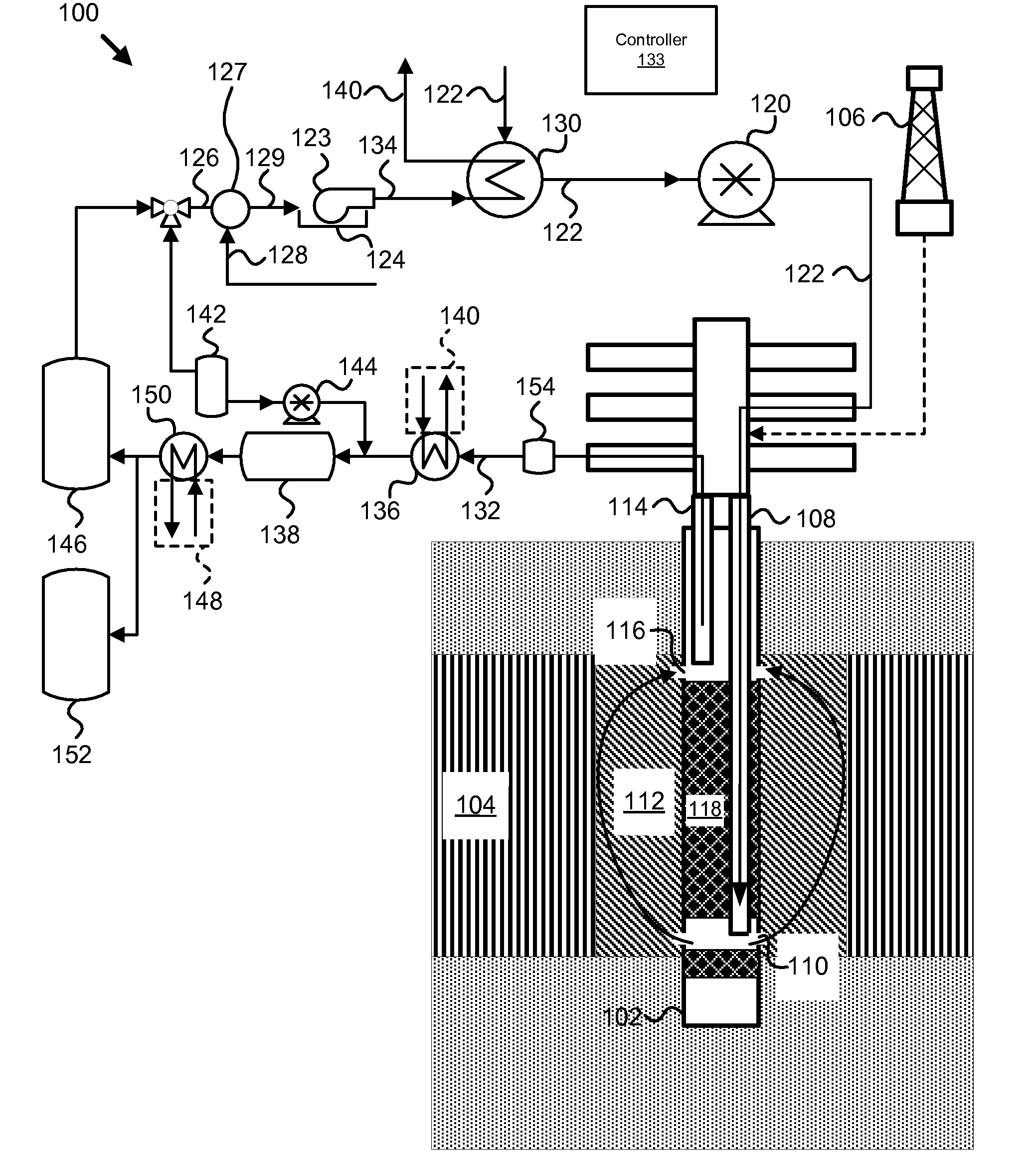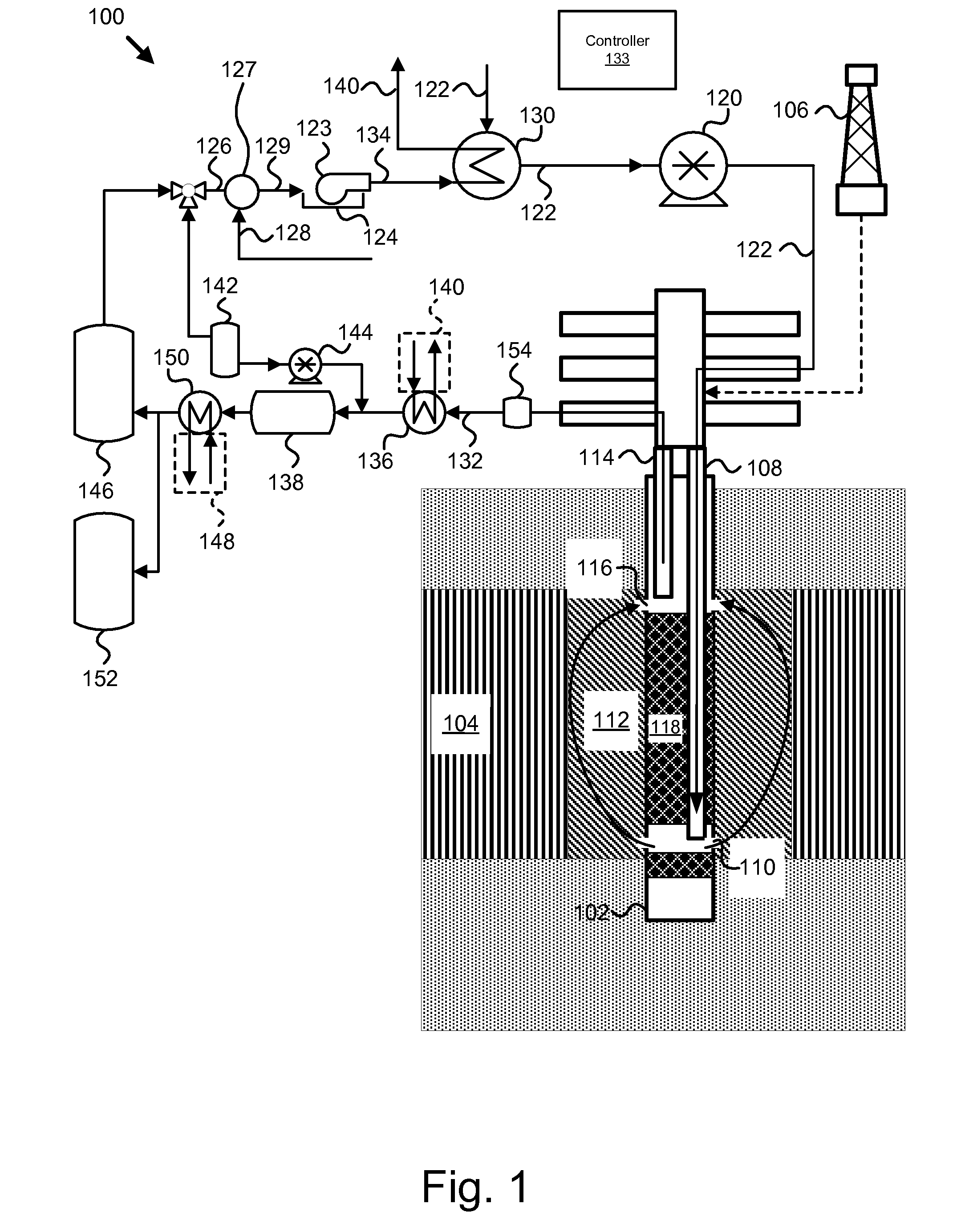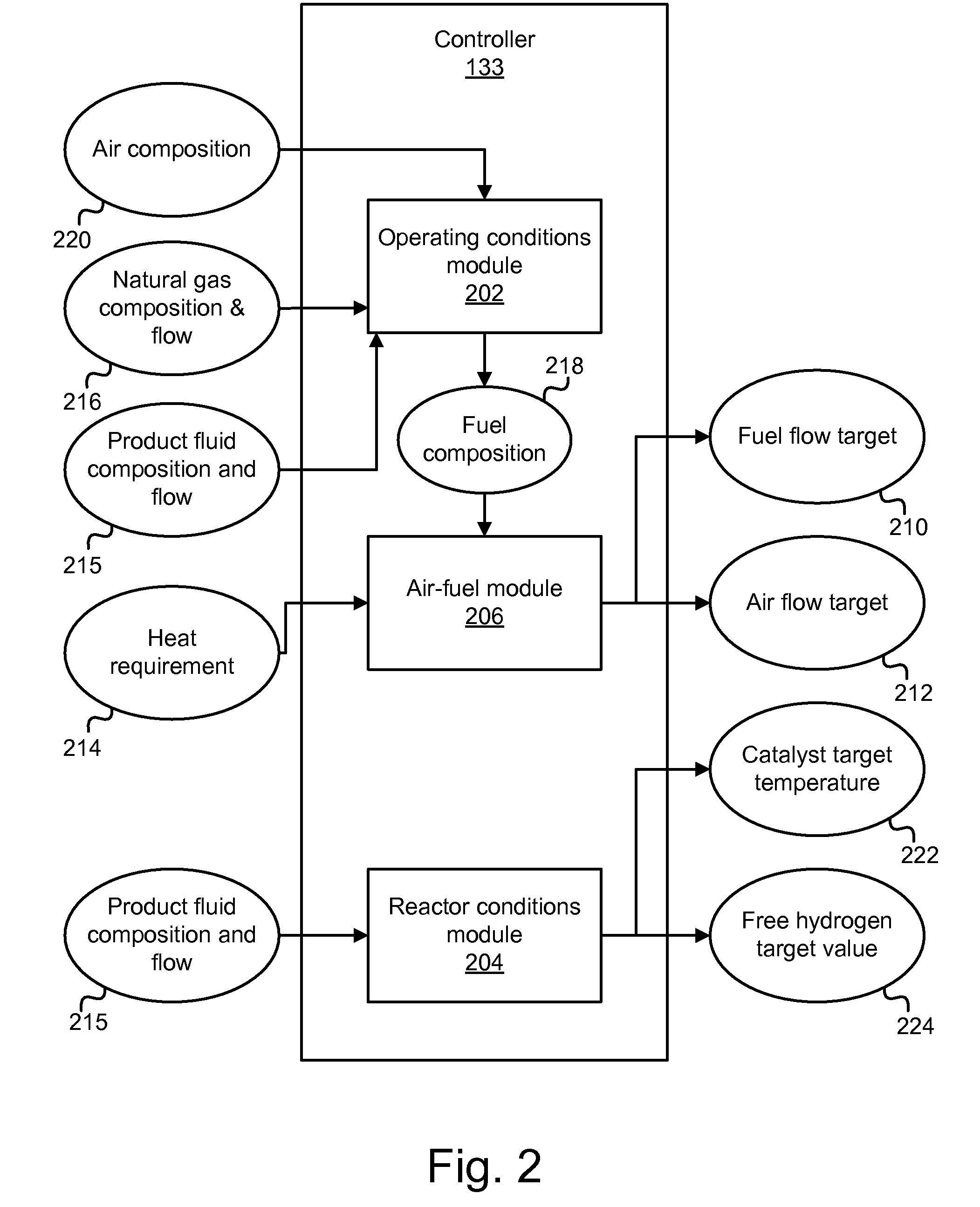Apparatus, system, and method for in-situ extraction of hydrocarbons
a hydrocarbon extraction and apparatus technology, applied in the field of hydrocarbon reservoir recovery, can solve the problems of high cost of flushing process, large amount of thermal energy to be injected into oil shale, etc., and achieve the effect of efficient delivery of thermal energy
- Summary
- Abstract
- Description
- Claims
- Application Information
AI Technical Summary
Benefits of technology
Problems solved by technology
Method used
Image
Examples
Embodiment Construction
[0043]It will be readily understood that the components of the present invention, as generally described and illustrated in the figures herein, may be arranged and designed in a wide variety of different configurations. Thus, the following more detailed description of the embodiments of the apparatus, system, and method of the present invention, as presented in FIGS. 1 through 15, is not intended to limit the scope of the invention, as claimed, but is merely representative of selected embodiments of the invention. Some aspects of the present invention may be more fully understood in light of U.S. Provisional Patent Application No. 60 / 912,354 to J. Kevin Shurtleff entitled “Apparatus, system, and method for in-situ extraction of oil from oil shale,” filed on Apr. 17, 2007, incorporated herein by reference. Additionally, some aspects of the present invention may be more fully understood in light of U.S. patent application Ser. No. 11 / 782,463 to J. Kevin Shurtleff entitled “Apparatus, ...
PUM
 Login to View More
Login to View More Abstract
Description
Claims
Application Information
 Login to View More
Login to View More - R&D
- Intellectual Property
- Life Sciences
- Materials
- Tech Scout
- Unparalleled Data Quality
- Higher Quality Content
- 60% Fewer Hallucinations
Browse by: Latest US Patents, China's latest patents, Technical Efficacy Thesaurus, Application Domain, Technology Topic, Popular Technical Reports.
© 2025 PatSnap. All rights reserved.Legal|Privacy policy|Modern Slavery Act Transparency Statement|Sitemap|About US| Contact US: help@patsnap.com



